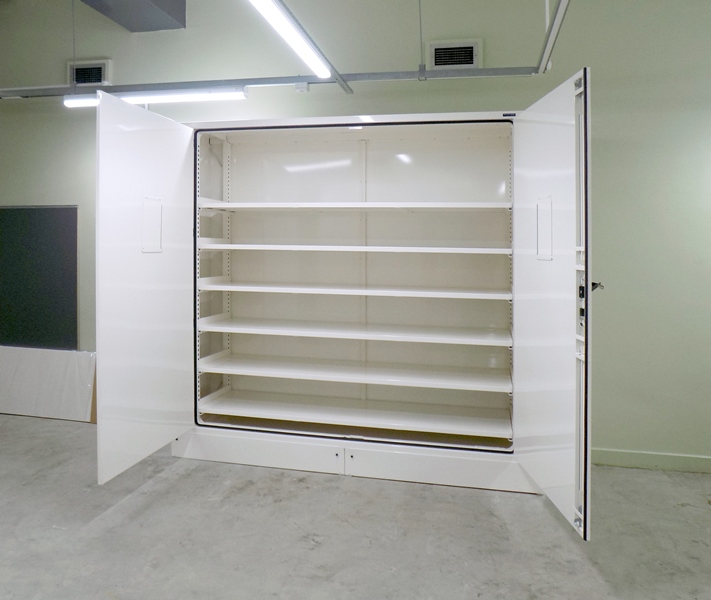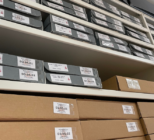Working closely with the team involved in caring for a vast collection of specimens enabled Polstore to gain a unique insight into the needs of the team and the artefacts. This allowed them to produce a shortlist of things to include and avoid for the project.
As a museum collection is never really complete, it was essential that the scheme was flexible enough to accommodate the current collection and future acquisitions. It quickly became clear that one size and design of cabinet was never going to meet all the collection’s needs.
Back to basics
The primary objective of the project was to condense two separate collections into one room for the very first time. Working with the museum’s palaeontology team, Polstore was able to identify a basic cabinet unit size which allowed the scheme to fit uniformly onto mobile bases – as well as larger cabinets where needed.
After this, in-depth discussions took place to establish the room layout so that the various sizes of cabinets could be arranged to contain the collection within their own taxonomical groups.
The new cabinet design had to adhere to strict criteria set out by the museum. This included a near airtight seal; double interlocking doors; minimal closed off or dead spaces that could harbour pests; and no wet seals or adhesives.
Rather than making additions to previous designs, it was necessary to create a new bespoke cabinet which met all requirements.

Future Proofing
In order to economise in the short-term, the museum wanted to reuse their existing stock of over 1,400 wooden collection trays in a way that would allow them to be replaced with a more optimised steel tray at a later date.
With the degree of dimensional tolerance established on these existing handmade wooden drawers, a rail system was engineered to not only accommodate the variance in size but also to require no mechanical fixings.
Unfortunately, the existing wooden shelves were not suitable to be retained for the project. A new design of metal shelves that met the load requirements and allowed for extension was instead created. This extendable shelf was not only easier and safer for removing specimens but also reduced the vertical gap between the shelves, increasing future storage capacity by around 30-35%.
In addition to a number of standard units, Polstore was tasked with producing matching larger units, which incorporated double width x single depth cabinets; single width x double depth cabinets; and double width x double depth cabinets.
Due to the low door height into the building, it was decided to produce a ‘knock down’ unit that could be shipped in sections and assembled in situ on the mobile base.

Slab Storage Area
The final part of the project was to produce a large slab storage area. Once establishing the most suitable location in the room – allowing for access and a clear space in front – Polstore set about devising an enclosed shelving system, steel clad on all sides, with an electrically operated, lockable roller shutter to the front.
Behind the roller shutter two bays of heavy-duty shelving in two specific widths were incorporated to accommodate all the slabs. The weight loading on each shelf varied according to the specimen it supported, with other shelves needing to pull-out to allow for the storage of two specimens on the same shelf – one behind the other.

The shelves also contained sealed bearing surfaces, enabling the specimens to be gently rolled in and out when required, whilst ensuring that they are adequately supported at all times.
These bespoke cabinets will remain part of the Natural History Museum collections for decades to come and are now integral to the historic institution.







